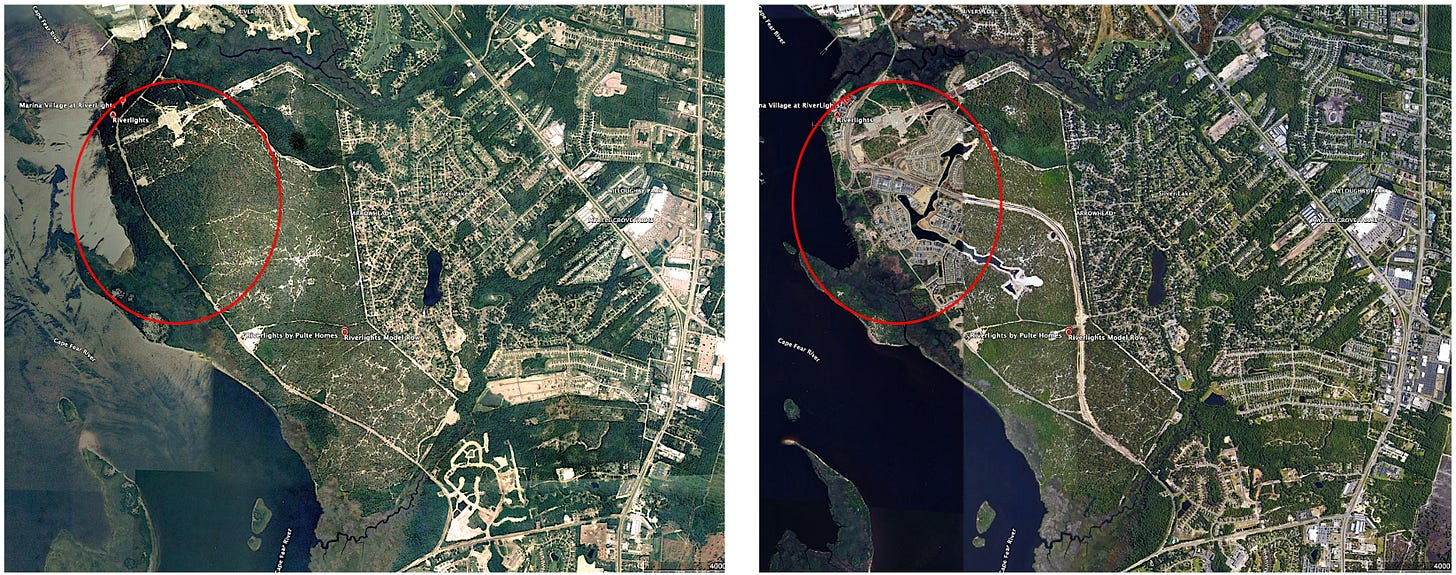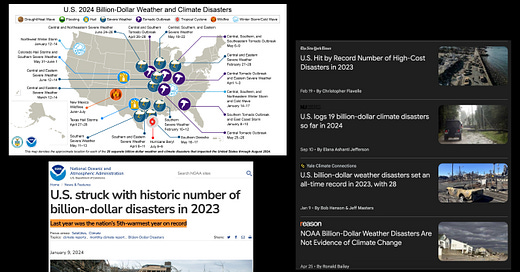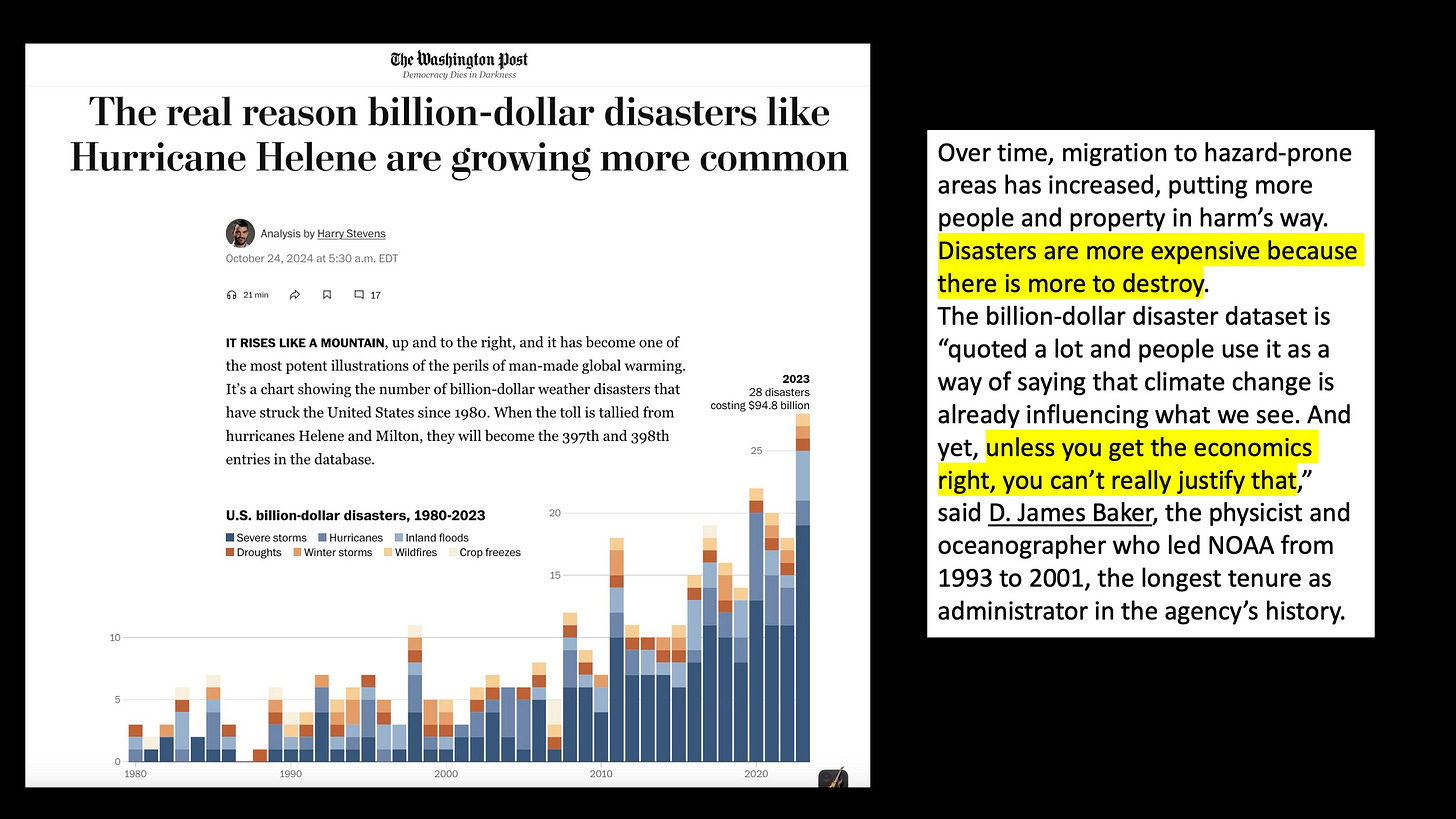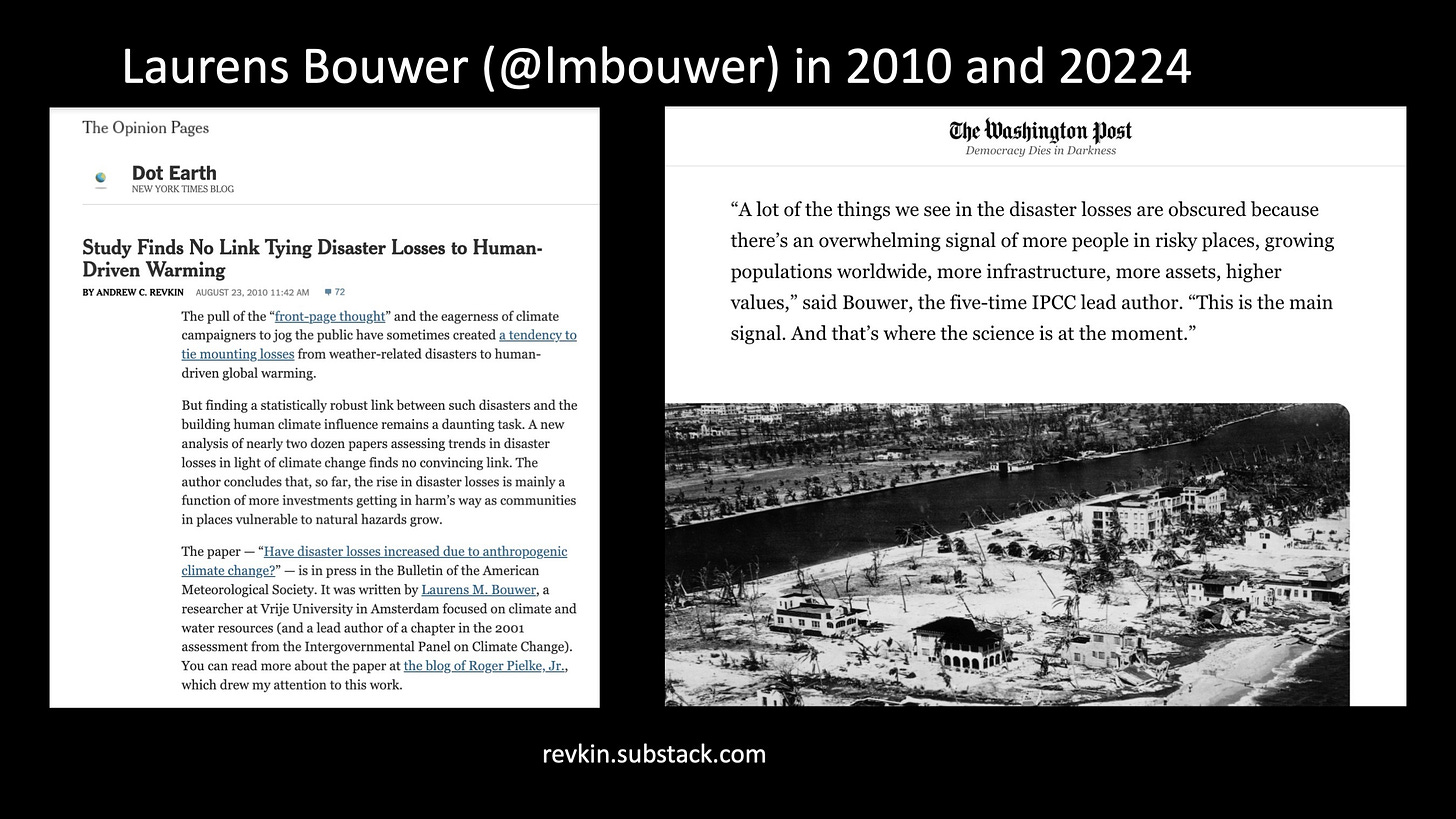The Washington Post Takes a Fresh Look at the Surge in NOAA's "Billion-Dollar Disasters" Tally
The Washington Post's Climate Lab writer, Harry Stevens, joined me to explore his fantastic reporting on what is, and isn't, driving this metric.
I’ve been deeply impressed with Harry Stevens’ reporting on climate at the Washington Post in his Climate Lab columns. He’s outdone himself with a big new analysis of the insights and issues around the National Oceanic and Atmospheric Administration’s much-covered tally of “billion dollar weather and climate disasters” from extreme climate events. Gift link: http://wapo.st/3YiJgaz. The key takeaways are:
The tracking project is valuable but there are lots of important questions about how the disasters are measured and compiled.
Frequent efforts by elected officials, activists and climate-centric journalists to use the surge in billion-dollar disasters as evidence of human-driven climate change have no solid basis in data.
We were serendipitously joined by , a researcher at the interface of climate and society at the University of North Carolina, Wilmigton. She’s writing up a storm on Substack on her Conflicted dispatch. In a recent
post on the expanding bull’s eye of vulnerable development in coastal North Carolina, she included just one of countless visuals demonstrating that humans are worsening climate risk far faster on the ground than they are through the heat-trapping influence of greenhouse gases on the global climate:
Please watch and share our discussion on Facebook, LinkedIn, YouTube or the recorded stream on X at @revkin.
The story largely tracks the reporting I’ve done since 2010 on the importance of distinguishing changes in a hazard from changes in impacts of the hazard, particularly through the research of Laurens Bouwer and others.
I’ll update this post after the show with fresh details. And of course click back to the highly relevant discussions of this topic I’ve had with a key researcher,
:Exploring Disasters, Climate, the Media and More with an Expert "Who Must Not Be Named"
“The world has neve been more prepared to deal with extreme events and has never done better than in this era right now,” said longtime climate policy researcher Roger A. Pielke, Jr., in our Sustain What conversation today.
NOAA Responds to Peer-Reviewed Critique of the Federal "Billion Dollar Disaster" Metric
Please click the ♡ button if you appreciate my work. This helps boost post visibility.









